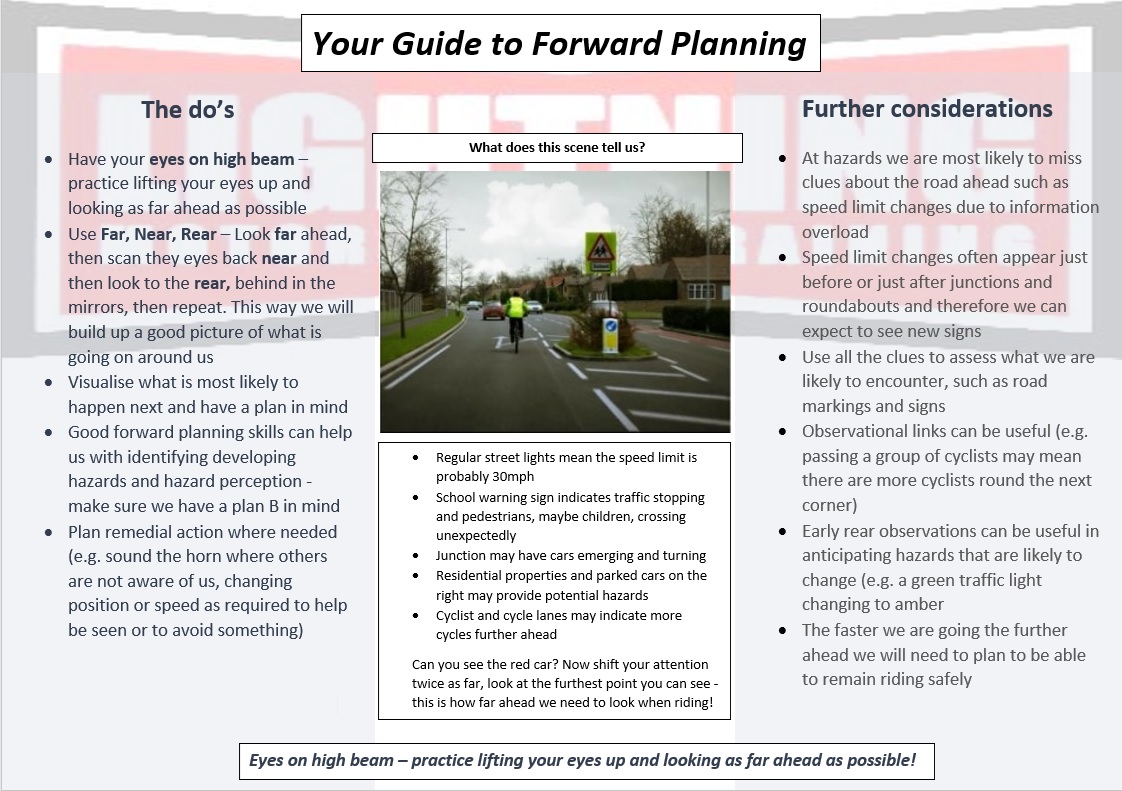Forward Planning

Why do we need good Forward Planning?
Forward Planning is your ability to make good judgements about oncoming traffic, road signs, traffic signals and general hazards. You cannot look too far ahead. This is an area where new riders can have a great deal of difficulty. In many cases the actual focus of the student rider is no more than 20 yards ahead.
Poor Forward Planning will result in reactive riding and rushed decisions. For example, approaching an amber light on traffic lights can cause problems. Typical faults can be either not stopping when there is adequate time or trying to stop too suddenly when there isn’t.
To become a safe motorcyclist and to pass the test easily as much practice as possible needs to be put into trying to read the road ahead and ride proactively (i.e. have a plan before you arrive).
FAQ
1/. When do I have “right of way”?
The short answer is – never. The Highway Code does not state that you ever have “right of way”. There are plenty of places where others have right of way and one or two places where you have “priority”. If in the test you tried to force “right of way” and caused another vehicle to swerve or slow down, then you would fail.
Remember that if you have an accident it will hurt the same whether you were in the right or in the wrong!
2/. How do I practice Forward Planning?
If you have a car licence, then you have plenty of opportunity to “plan ahead”. However, whether you are training or riding on your own it is good practice to try and imagine the worst consequences of what could happen ahead and planning accordingly. If you find yourself focusing at the same distance all the time this does not bode well. You need to try and vary where you look from far ahead, near and behind – Far, Near, Rear.
3/. Okay, so I have Forward Planned, now what?
Well now you have the opportunity to put some remedial action into practice such as sounding the horn, moving your position or altering your speed. In addition, you are now better placed to read the “body language” of any oncoming vehicles or those waiting at side roads. What are their intentions?
4/. I keep missing speed limit signs, what am I doing wrong?
Well this is a typical example of when you need to Forward Plan. In many cases speed limit signs occur before you enter a roundabout, as you turn into a junction, or as you emerge from a junction. On many occasions these can be situations where your attention is often elsewhere either doing lifesavers or looking for a suitable gap. This is why you need to look ahead into the junction or roundabout well before you arrive to ensure that you spot the speed limit signs before you need to look elsewhere. You can also gather clues about the speed limit for the road you are riding along by checking for signs on every seventh or eigth lampposts (repeater signs) or by looking at side roads to see if they have speed limits posted.
5/. Is this a lifetime’s work?
Yes!



